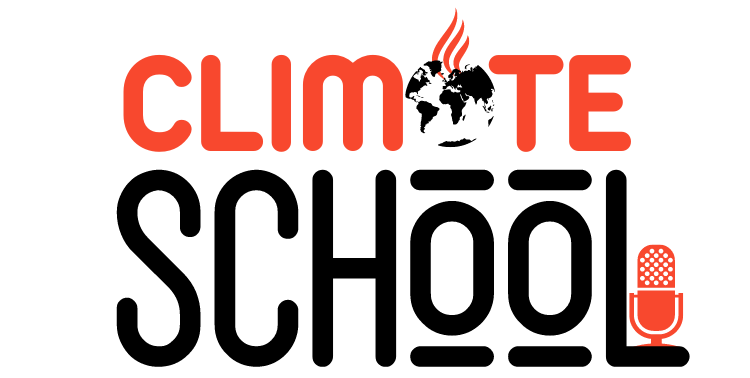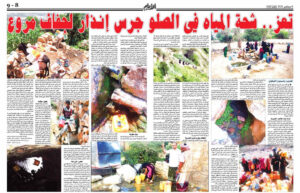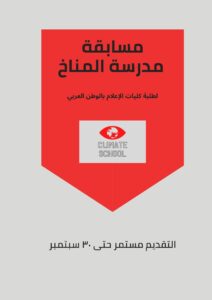This article is quoted from the International Journalists Network website - link to the original article published on November 28, 2023 here
As the Conference of the Parties to the Climate Change Convention (COP28) approaches, the International Journalists Network provides a set of guidelines for writing specialized articles on environmental issues. Biodiversity is one of the globally important topics that directly affects our lives and is considered one of the most important branches of environmental journalism.
What is biodiversity?
According to the United Nations Environment Programme, biodiversity is defined as the diversity of organisms, plant systems, and diversity among genera and species. It is a description of the diversity of life forms on Earth, and a measure of variation at the genetic, species, and ecosystem levels, including 8 million species of plants and animals found on the planet. The Earth, and the ecosystems it contains.
Biodiversity refers to the diversity of life on Earth and the natural patterns it forms. According to the United Nations Environment Programme, human activity is pushing one million species of plants and animals towards extinction.
Biodiversity is the diversity of life on Earth and the natural patterns that form it, and what we see today is the result of 4.5 billion years of evolution, in addition to human influence as well. The loss of biodiversity is a form of the effects of climate change, as climate change affects the warmth and acidity of the waters of the seas and oceans and the The temperature of the Earth's surface, the amount and timing of rainfall, and these changes in turn affect the quality of the soil, groundwater, microorganisms, as well as the diseases that affect these elements.
Collapse of biodiversity
According to the United Nations Environment Fund, species are now disappearing hundreds, or even thousands, of times faster than the natural rate of extinction. The highest levels of terrestrial biodiversity are found in tropical forests, which host more than 80 percent of terrestrial species. About 1.6 billion people depend on Forests are their livelihood, and a quarter of modern medicine comes from tropical forest plants.
The need to preserve biodiversity is not limited to the terrestrial environment, the oceans also play a vital role in mitigating the climate crisis, and are a source of protein for about 3 billion people. It also contains countless species, about which little information is available, and which could be a source of new medicines and materials.
Important definitions
What are ecosystems?
Ecological communities that include interactions between different organisms.
What does it mean to fix it?
Helping restore their original form that has been degraded or destroyed, as well as preserving ecosystems that are still intact to protect them from degradation.
Benefits of maintaining and repairing them?
Several benefits, including more fertile soil; This means greater yields of timber and fish, and greater stores of greenhouse gases.
What is a food chain?
An imaginary diagram that expresses the transfer of matter, nutrients, and energy from one living organism to another in an environment.
Biodiversity Levels:
Ecosystem diversity
Species and genes diversity
Gene diversity
Impact of biodiversity loss
It is an indicator to evaluate the state of ecosystems, their trends and the impacts of human activities. Population declines, extinctions and ecosystem degradation, affecting economies, livelihoods, food security and cultural diversity. Natural products support many industries such as pharmaceuticals, paper and timber manufacturing.
How do you choose a journalistic idea?
By monitoring the following:
Disruptions in environmental systems
economical development
Trafficking in species
Monitoring individuals’ behaviors (poaching or killing)
As for the element of imbalance in environmental systems, it can include the following points:
Excessive use of agricultural fertilizers and pesticides (example)
The shells that are collected, traded and used as a form of decoration are the home of mollusks, and are also food for some species of crabs.
Pollution of water bodies with plastic and its fine particles is considered one of the threats to the health and safety of marine life (example).
Contaminated sand with cigarette butts can suffocate marine organisms (example).
Sunscreen creams can destroy the marine environment.
According to the US National Oceanic and Atmospheric Administration (NOAA), up to 14,000 tons of sunscreen ends up in the seas each year, of which between 4,000 and 6,000 tons end up on coral reefs.
Economic development is one of the factors affecting biodiversity through:
Urban development (report), (example).
Building on agricultural land (example).
Energy generation sources (example).
Species trafficking and associated poaching (e.g.) and indiscriminate killing (e.g.) are factors that threaten biodiversity, and a journalist can monitor all of these factors in his or her country.
Track the numbers
Following up on research studies and reports issued by international organizations concerned with the environment is an important source for obtaining statistics and figures through which one can come up with the idea of a journalistic treatment and one can work in the manner of data journalism, collecting and analyzing numbers (example).
Resources that can be used:
– Follow up on research studies published in scientific journals by searching on Google Scholar. The scope of the search can be customized to include your country, and if you are from Egypt, you can visit the Knowledge Bank website.
United Nations website
Green Climate Fund website
Bird life international
Global Green Growth Institute
United Nations Environment Programme
The World Bank
Intergovernmental Panel on Climate Change
Adaptation Fund
The most prominent international agreements
– CITES Convention to protect species from the risk of extinction
– The “Ramsar” Convention, which stipulates the protection and preservation of all wetlands
– The “Cartagena” Protocol on Biosafety to the Convention on Biological Diversity
– “Nagoya” Protocol on the Equitable Division of Biological Resources
– Convention on the Conservation of Migratory Species of Wild Animals (CMS)
– The African-Eurasian Agreement for the Conservation of Migratory Waterbirds, known as AEWA
It is necessary to review the constitutional rules, legislation and laws in your country, either to find out what should be and compare it to what exists, or to compare the international treaties and agreements that have been signed and whether their provisions have been translated into decisions and legislation or not, and whether the constitution includes articles that are not reflected in legislation.
Always ask yourself:
What are the governing rules or systems?
Does it include the topic you are researching?
Is there a constitutional text that is not implemented through laws?
Is there legislation but there is a failure to implement it?
Does the legislative text need to be updated due to new developments?
Classifications approved by the International Union for Conservation of Nature (ICUN) Red List criteria for threatened species.
The Red List is a list established by the International Union for Conservation of Nature that includes a statement of the status of all plant and animal species. It is re-evaluated every 5 years and sometimes every 10 years at most. It has several levels:
– Extinct in the wild (EW)
– Extinct (EX)
– Critically endangered (CR)
– Endangered (EN)
– Vulnerable to extinction (VU)
– Under Threat (NT)
– Less Threat (LC)
– Information not available (DD)
– Not rated (NE)
Writing tips
Regarding the introduction, try to write a different introduction using the following:
- Using a poetic or literary quote, or from popular proverbs or folk tales.
- It can show why you chose the idea and your role in research and investigation.
The human story is one of the preferred approaches to writing scientific stories.
Statistics and numbers are a good introduction, but the context must be relevant.
For the text:
The content is divided into paragraphs, the sentences should not be long, scientific terms must be explained, and more than one axis can be addressed, such as the historical and social context.
- Writing in the form of a story that has an introduction, middle, and end.
-Don't forget the solutions:
It is preferable that the story include the aspect of conceptualizing solutions, especially in the case of a threat to extinction. Start planning early if the story is multimedia.
For more information about ecosystems and biodiversity, you can visit the following sites:
SEEA website
GEO website
EO4EA website
Important keywords:
CBD: CBD
IPBES: An intergovernmental organization established to improve the interface between science and policy on issues of biodiversity and ecosystem services
IPCC: Intergovernmental Panel on Climate Change
UNFCCC: United Nations Framework Convention on Climate Change.
Main image licensed for use by Kazi Horner.





